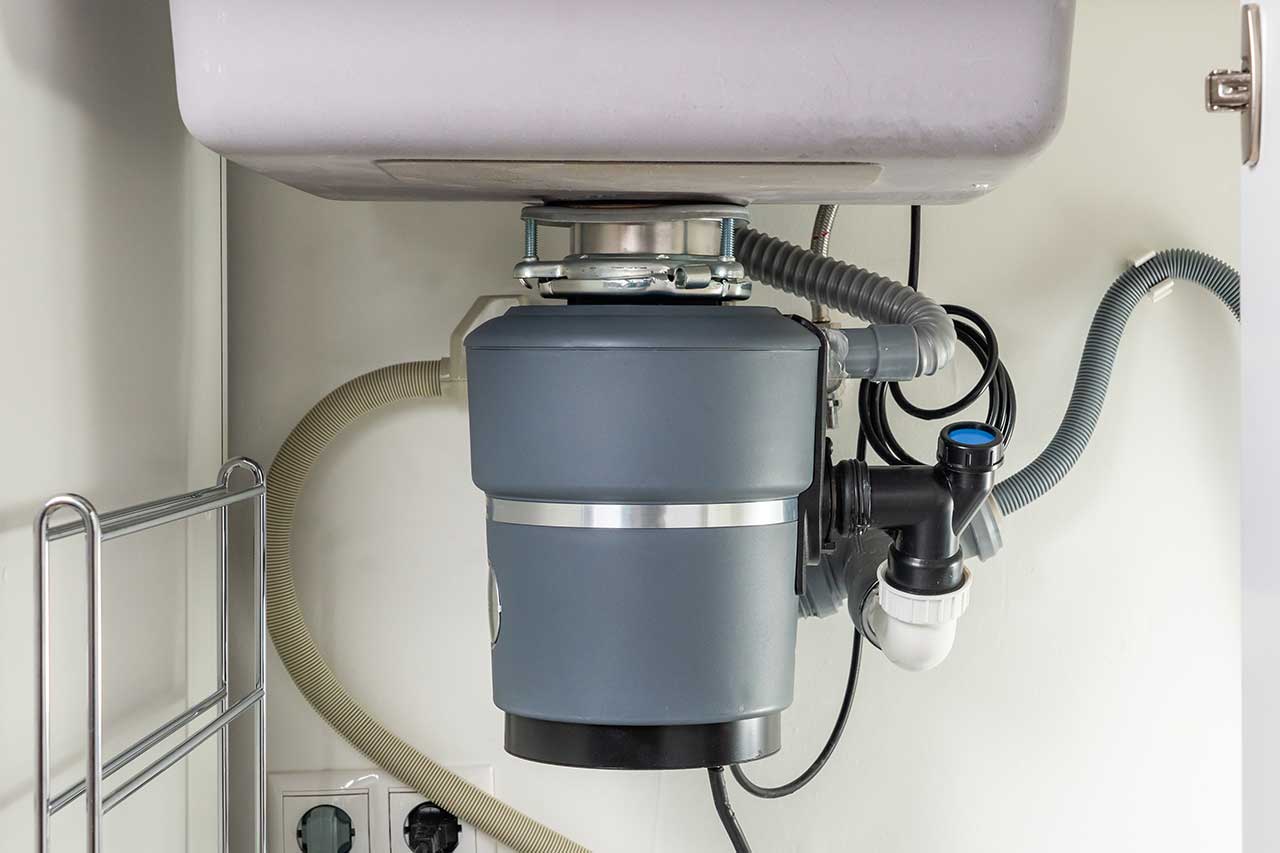
Use the old toothbrush to scrub off any build-up that tends to accumulate on the underside. Remove the splash guard (the black rubber cover) if possible and clean it thoroughly.Carefully pour the boiling water into the garbage disposal and turn it on to flush away the loosened debris.When the water is boiling, remove the covers to the sink and garbage disposal.While it is soaking, fill the large pot with water and bring it to a boil.Let this mixture set for about 10 minutes.

(Remember those erupting volcano projects in grade school? – same idea) You will want to insert the cover of both your garbage disposal as well as the drain in the second sink if applicable. Be prepared for it to fizzle and bubble as it expands. Slowly add 1 cup of vinegar to the baking soda.Pour 1/2 cup baking soda into the garbage disposal.This is also believed to sharpen the blades. Next, run a couple of ice cubes through to loosen food that may be stuck to the blades or grinders.Begin by flushing away any food that may be in your garbage disposal.Typically, deep cleanings are needed every 1-3 weeks. The frequency of deep cleanings will depend on how heavily your disposal is used and how well it is cleaned each day. Remove the drain or screen and scrub away any dirt and grime using the small scrub brush.ĭeep cleanings offer a great chance to remove any build-up and sharpen the blades/grinders.The hot water and detergent should loosen and remove most debris left in the disposal. Turn on the garbage disposal and let the water flush through.Each day fill your sink and garbage disposal with hot water (as hot as you can stand) adding a small amount of dish detergent (enough to make some suds).Daily Cleaningĭaily maintenance will help keep your garbage disposal running well and reduce the need for frequent deep cleanings. To keep them running properly and lasting a long time, they require a daily care to stay clean and odor free. If not, you may want to consider calling in your last resort: the professionals.Garbage disposals are convenient and found in many of our kitchens. (Again, the reset button may be necessary to get it started.) If it works properly, call it a day and make yourself a cocktail this time. Then run hot water into the disposal for another few minutes. The combination of baking soda and vinegar ultimately offers the same type of unclogging ability, but on a much gentler scale.Īfter five to 10 minutes, turn the breaker and the disposal back on. Because many garbage disposals contain plastic parts, harsh drain cleaners can be detrimental. Next, pour ½ cup of white vinegar over the small pile, and be prepared for fizz and foam. Step 4Įnsuring the breaker and disposal are both off, pour ¼ cup of baking soda in the garbage disposal. If not, it may be time to prepare a cocktail-for the clogged drain, that is. Should it work, add a notch on your DIY belt. If so, turn on the breaker and disposal to see if the food remnants can now be processed through the drainpipe. When finished, see if water will drain-a good sign that scraps might also do the same. After covering the drain completely with the plunger, allow water to cover the edge of the plunger and plunge the drain a few times.


 0 kommentar(er)
0 kommentar(er)
